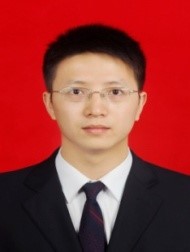Invited Talk: Ming-Chun Tang, Chongqing University
Special session 1: Metamaterial-inspired AntennasAdvanced Radar Imaging and Sensing Technologies

Short Bio:
Ming-Chun Tang received the Ph. D. degree in radio physics from the University of Electronic Science and Technology of China (UESTC), in 2013. From August 2011 to August 2012, he was also with the Department of Electrical and Computer Engineering, The University of Arizona, Tucson, AZ, USA, as a Visiting Scholar. He is currently a full Professor in the School of Microelectronics and Communication Engineering, Chongqing University, China. His research interests include electrically small antennas, RF circuits, metamaterial designs and their applications.
Prof. Tang is the Senior Member of the Chinese Institute of Electronics. He was a recipient of the National Science Fund for Excellent Young Scholars in 2019. He was a recipient of the Best Student Paper Award in the 2010 International Symposium on Signals, Systems and Electronics (ISSSE2010) held in Nanjing, China. His Ph.D. students received Best Student Paper Awards from the IEEE 7th Asia-Pacific Conference on Antennas and Propagation (2018 IEEE APCAP) held in Auckland, New Zealand, 2019 IEEE International Applied Computational Electromagnetics Society (ACES) Symposium held in Nanjing, China, 2019 IEEE International Workshop on Electromagnetics: Applications and Student Innovation Competition held in Qingdao, China, and 2019 Cross Strait Quad-Regional Radio Science and Wireless Technology Conference held in Taiyuan, China. He is the founding Chair of the IEEE AP-S / MTT-S Joint Chongqing Chapter. He serves on the Editorial Boards of several journals, including IEEE Access, Electronics Letters and IET Microwaves, Antennas & Propagation. He has also served on the review boards of various technical journals, and many international conferences as a General Chair, TPC Member, Session Organizer, and the Session Chair.
Title: Antenna-inspired Metamaterial Absorber with Low-profile, Wideband, and Fully Improved Angle Insensitive Performances
Abstract:
The emergence of metamaterial (MM) at the end of the 20th century has significantly promoted the advances of concepts and methodologies of material, especially for artificial material. As a benefactor, MM absorber has meet the new bloom, and various design theories and methods have been developed to promote its advances. Commonly, these reported design methods, are mostly based on the effective medium theory and the equivalent circuit theory and mainly for bandwidth increasing and angle/polarization insensitivity improving. Besides, interference theory, antenna reciprocity theory, Lorentz model, global optimizations, etc., are also proposed to expand bandwidth or to increase the number of bands. However, up to date, the satisfactory realization of MM absorber simultaneously occupying low profile, wide bandwidth, particularly and large-angle stability characteristics is still full of challenge.
The field of antenna theory and engineering has been evolving for over a hundred years, providing a precious asset of complete knowledge of the mechanism and properties of wave radiation and propagation. Inspired by the reciprocity theorem of antenna theory, a new design method is proposed by treating the absorber unit-atom as induced current composite, in terms of omnidirectional radiation pattern synthesis and relative absorption pattern conversion. As a result, a light, simple, low-profile, and broadband MM absorber is achieved with near-omnidirectional TM wave absorption, as well as effective TE wave absorption is achieved. The outstanding comprehensive performance would enable the proposed absorber find great potential for engineering applications, such as, RCS reduction, absorption with angular stability.
|

